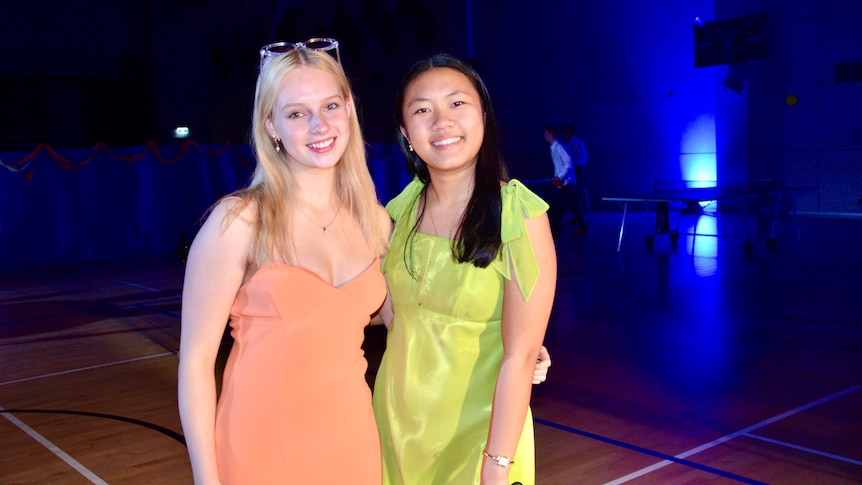In a world of mass-produced fast fashion, West Australians are increasingly turning to new initiatives to give their clothes a second life.
Key points:
- West Australians are increasingly getting behind clothes swaps, outfit hiring and upcycling
- It comes amid concerns about the environmental impacts of fast fashion
- On average, each Australian throws out about 23kg of clothes a year
With each Australian throwing out more than 20kg of textile waste a year, some individuals, councils and companies in Western Australia are trying to reduce the amount of clothes being sent to local landfills.
Among the initiatives taking off in WA is trading garments through community clothes swaps, hiring outfits rather than buying them and upcycling or re-fashioning old clothes.
WA style counselor Ciara Lowe-Thiedeman said the second hand economy was booming.
“The number of people interested in these kinds of initiatives, in second-hand, in understanding how to get the best garments at the best price and how to keep things in circulation and how to earn money from your bad decisions as well – is hugely on the rise,” she said
“Teenagers and young people are hiring much more often because hiring is also much more affordable.
“Lots of people are doing it, it’s becoming rife and I applaud it.”
Ms Lowe-Thiedeman said she was glad to see people moving towards greener fashion choices at a time when many were still embracing mass-produced, low-cost clothes known as fast-fashion.
“I think slowly but surely we are becoming more aware. [But] we’re not becoming aware fast enough,” she said.
“We’ve got this rise of little industries, you know, your clothes swaps, your second-hand shops and your op shops – because they’re making money off peoples excess or people’s bad mistakes.”
WA councils lend a hand
The Eastern Metropolitan Regional Council, which handles waste for several Perth councils, started holding community clothes swaps in an attempt to stop textiles ending up in landfill and recycling bins.
Waste education coordinator Isabelle Marie said it was about getting more people interested in re-using garments and breaking down the stigma of second hand clothes
“People always proudly tell us when they’re wearing something that has come from the swap,” Ms Marie said.
She said the swaps were becoming more popular.
“From the very first swap, when we’re looking at our numbers, we have started to see them increase,” she said.
“More people are aware and more people are attending.”
It’s ‘cool’ to thrift and upcycle
However, the rise in popularity of these new thrifty initiatives had not dimmed visitation to local op shops.
Good Sammy chief executive Kane Blackman said stores were full of people buying clothes for themselves and even re-working them for a profit.
“It’s very cool to thrift right now,” he said.
“We’re seeing about 30,000 Western Australians coming into our stores every week.
“People come in and they see opportunities in some clothing, to make a small amendment, to make it into something new – we’re seeing a great demand for that.
“Some of them do upcycle it and a number of people do sell those items online. So we’re creating secondary employment for people across the state.”
Mr Blackman said people were becoming more socially aware of the impacts of textile waste.
Textile waste rotting away in landfill
Data from Australia’s Department of Climate Change, Energy, Environment and Water showed the average Australian bought 27kg of new clothes each year and discarded about 23kg into landfill.
Curtin University School of Design researcher Dr Anne Farren said that it was “a massive amount” of textile waste to deal with locally.
“If we are all producing that level of waste and we just look at the WA situation, we’re getting up to around 60 million tonnes of garment waste produced in WA,” she said.
Dr Farren said anything that could be done to stop textile waste going to landfill was fantastic.
“A lot of the textile waste unfortunately doesn’t break down … synthetic material often has a plastic component to it and they just take forever to break down,” she said.
“It’s as bad as and similar to a plastic.”
.

